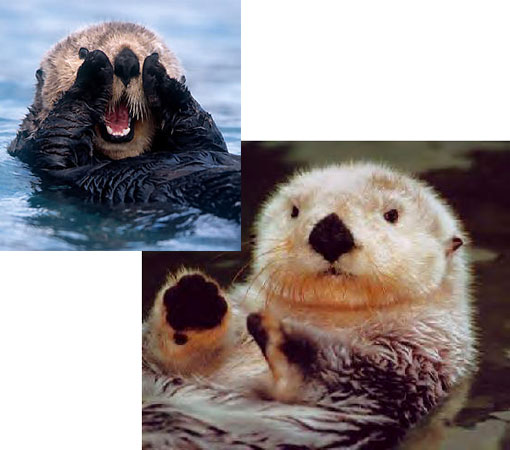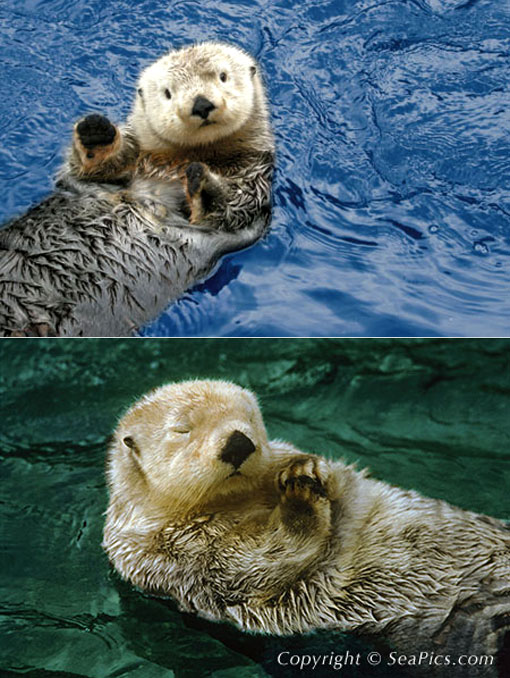You are hereBlogs / WcP.Scientific.Mind's blog / Sea otters eat sea urchins, protect kelp forests that trap CO2 from atmosphere - but can they catch up to man-made pollution?
Sea otters eat sea urchins, protect kelp forests that trap CO2 from atmosphere - but can they catch up to man-made pollution?


Smart Sea Otter Stacks Cups
Sea Otter Pup
(quote)
"Nature does nothing uselessly. " - Aristotle
Global warming? Sea otters to the rescue!
Global warming is reaching new records, ice caps continue to melt at an alarming rate, and measures taken by authorities are as rare as they are questionable. But as cute as they are, where do otters step in? Well, as I was telling you, otters like to feast on sea urchins. Sea urchins eat kelp, and kelp forests trap and store massive amounts of CO2 from the atmosphere. A kelp forest ‘guarded’ by otters can absorb as much as 12 times the amount of CO2 from the atmosphere than one without an otter population.
Published in the respectable online journal Frontiers in Ecology and the Environment, the research that came to this conclusion didn’t go unnoticed at all, as professor Chris Wilmers from the University of California, Santa Cruz, explains: “Right now, all the climate change models and proposed methods of sequestering carbon ignore animals. But animals the world over, working in different ways to influence the carbon cycle, might actually have a large impact.” He elaborates: “If ecologists can get a better handle on what these impacts are, there might be opportunities for win-win conservations scenarios, whereby animal species are protected or enhanced, and carbon gets sequestered.”
So, in order to give thanks to these remarkable pictures, here’s a few pictures of sea otters.
Sea Otters To Save World From Environmental Collapse
Otters are good for much more than just making people go “Awwwwww” at aquariums across the world. Given enough time, the clowns of the sea could save the worlds from global warming, and all they have to do is what comes naturally — keep eating sea urchins. Which they do with their adorable hands, like they think they’re people!
How it works is this. Climate change is exacerbated by greenhouse gas emissions that come from pretty much everything cool that humans from driving cars to operating power plants to farming cattle. Kelp beds where otters hang out are some of the most efficient CO2 absorbers known to man — they are, as it were, super-effective! But sea urchins love to eat some kelp bed.
This is where otters come in, because otters, in turn love to eat them some sea urchins, preferably while frollicking delightfully in thriving kelp beds. So, let’s follow along — more otters means less urchins means more healthy kelp beds means less CO2. According to researchers at the University of California, Santa Cruz published in the journal Frontiers in Ecology and the Environment, that simple equation could prove the key to keeping CO2 in kelp beds, where it has less chance to destroy the world.
It’s not a ton of help, ultimately, but considering the greenhouse gas emissions mess we’re in — and how much worse it could get — man, we’ll take any help we can get.
(unquote)
Photos courtesy ZME Science / SeaPics.com



















What a talented creature) and so funny)